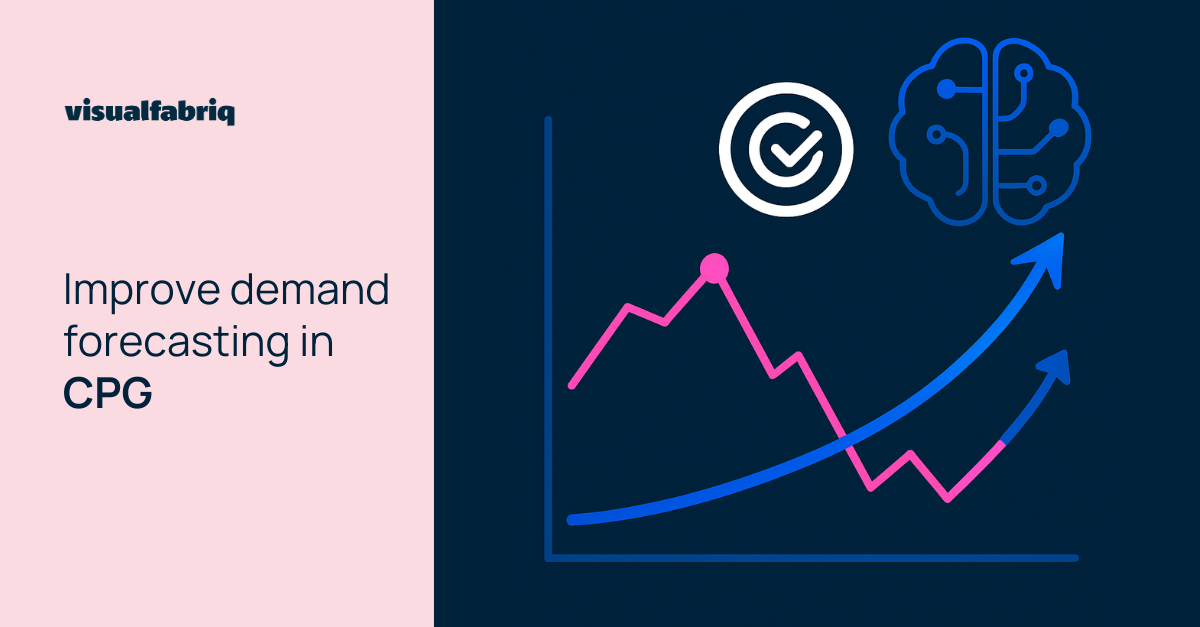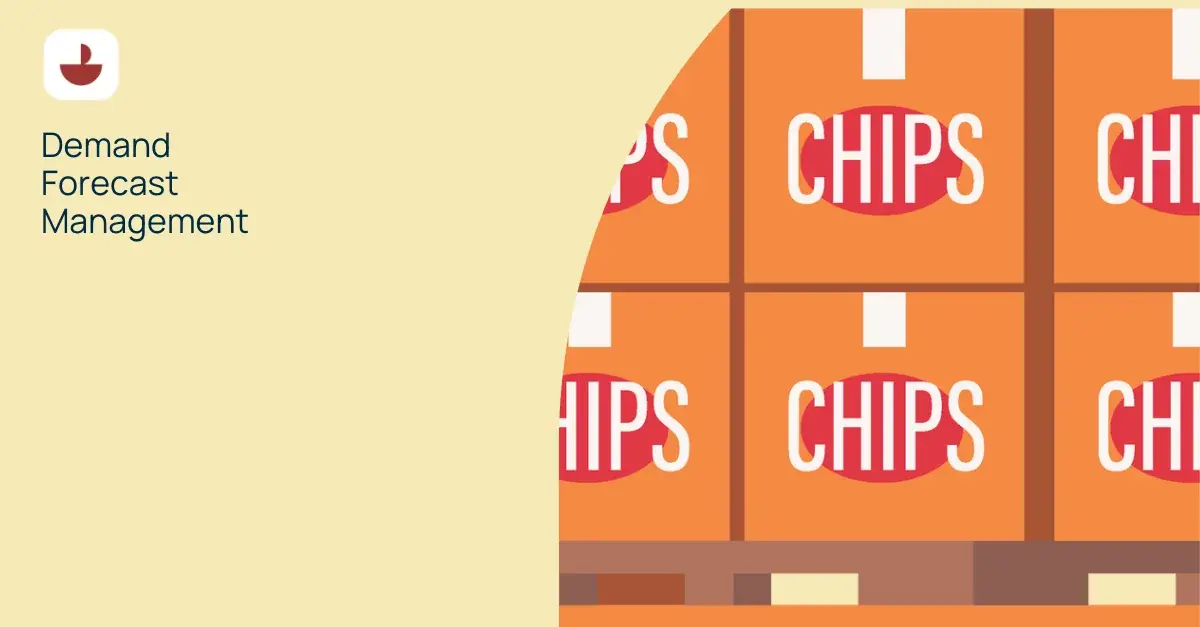
How to improve demand forecasting accuracy in CPG
If you’re a demand planner in the CPG industry, you know the pressure: forecast wrong, and you risk overstocking, missed sales, or wasted trade spend. But getting it right is harder than ever.
Demand is more volatile. Promotions, competitor moves, and shifting consumer behavior can throw off even the best-laid plans. Data is everywhere—scattered across systems, teams, and partners—and when products move through indirect channels like distributors or wholesalers, it’s tough to see what’s really happening at the shelf.
Demand forecasting today isn’t just about numbers. It’s about enabling smarter decisions, aligning teams, and helping the business stay ahead. That’s why improving demand forecast accuracy isn’t optional—it’s essential.
Traditional pain points in demand forecasting
To understand how to improve demand forecasting accuracy, it helps to look at what’s been holding us back.
One major challenge is the manual analysis of expanding data sets. With inputs coming from sales, promotions, retailers, and external sources, planners often end up buried in spreadsheets. It’s time-consuming, error-prone, and hard to scale.
Human bias is another issue. Forecasts can be influenced by gut feeling, past experiences, or internal pressure—leading to over- or underestimation, especially without a consistent method to validate assumptions.
And then there’s limited granularity. Traditional methods often produce high-level numbers that miss what’s happening at the SKU or banner level. That makes it tough to spot local trends, respond to specific customer needs, or plan effectively for promotions.
Improving demand forecast accuracy means addressing these pain points—not just with better tools, but with better ways of working.
The impact of indirect routes to market
Indirect routes to market—like distributors and wholesalers—can obscure visibility into true consumer demand. Shipment data alone doesn’t tell the full story.
To close the gap, you need smarter route-to-market data strategies. That means combining sell-in with sell-through and sell-out data, retailer insights, and syndicated sources. This gives you a clearer picture of what’s actually sold, not just what’s shipped. If sell-through or sell-out data is missing, it should be modeled—so you can plan confidently, even with incomplete data.
The more complete your view of demand, the more accurate your forecast. And that leads to better decisions across supply chain, finance, and commercial teams.
.png?width=1200&height=300&name=Indirect%20Routes%20to%20Market%20in%20CPG%20From%20Obscurity%20to%20Transparency%20(3).png) Human + Machine: The power of collaboration
Human + Machine: The power of collaboration
Technology plays a big role in improving demand forecast accuracy—but it’s not the whole story.
Human-in-the-loop forecasting combines smart tools with planner expertise. AI and automation can process vast amounts of data and generate predictions quickly. But planners bring context, commercial insight, and market knowledge that machines can’t replicate.
Automation handles the heavy lifting, so planners can focus on validating assumptions, adjusting for market shifts, and making informed decisions. This collaboration leads to better outcomes—combining the scale of automation with the adaptability of human judgment.
Automation and AI to improve demand forecast accuracy
 Automation and AI are essential for improving forecast accuracy in CPG.
Automation and AI are essential for improving forecast accuracy in CPG.
They enable granular forecasting—by SKU, customer, channel, or promotion—by processing large volumes of data from sales, promotions, retailer systems, and syndicated sources. This lets you move beyond broad averages and see the details that matter.
At the same time, AI supports aggregate-level analysis, helping you track overall trends and align with strategic goals. This flexibility—zooming in and out—is something manual methods can’t match.
Automation also reduces human bias by relying on consistent, data-driven models. And when plans change, AI-powered tools offer scenario flexibility, allowing you to adjust forecasts top-down or bottom-up.
Ready to take a deeper dive? Download our guide: AI-driven Demand Forecasting in CPG.
Incorporating uncertainty: Risks & opportunities
No forecast is perfect. That’s why it’s important to account for uncertainty.
Modern tools let you include risks and opportunities directly in your outlook. Instead of relying on a single number, you can build a range—showing what’s likely, what could go better, and what might go wrong.
This helps you prepare for multiple outcomes and align cross-functional plans. It also improves collaboration, as teams work from shared scenarios and make more confident decisions.
So if you’re looking to improve demand forecast accuracy, don’t just aim for precision—build in flexibility.
👉 Want to see how this works in practice?
Book a demo with Visualfabriq and discover how our forecasting solutions help you plan with confidence—no matter what the market throws your way.
Scenario planning and real-time responsiveness
.png?width=1200&height=627&name=Promotional%20Price%20Strategy%20Blog%20(1).png) Forecasting is about being ready for what’s next. Scenario planning helps you do that—whether it’s a seasonal spike, a new product launch, or a sudden shift in consumer behavior.
Forecasting is about being ready for what’s next. Scenario planning helps you do that—whether it’s a seasonal spike, a new product launch, or a sudden shift in consumer behavior.
You can model best-case, worst-case, and most-likely outcomes, so your team isn’t caught off guard.
Real-time responsiveness isn’t about reacting to every small change—it’s about learning fast. When actuals come in from retailer data, syndicated sources, or internal systems, you can compare them to your forecast, learn from deviations, and improve the next cycle.
This feedback loop helps sharpen accuracy over time.
So if you’re looking to improve demand forecasting accuracy, scenario planning and real-time feedback are two tools you’ll want in your kit.
Organizational alignment and transparency
Improving demand forecast accuracy isn’t just about better models—it’s also about better teamwork.
Forecasts impact every part of the business. Supply chain uses them to plan production, finance to guide budgets, and commercial teams to shape promotions. But when teams work in silos, plans fall out of sync.
Organizational alignment means working from the same forecast, built on shared data and assumptions. Transparency—through a single source of truth—helps teams stay aligned, avoid misunderstandings, and build trust in the numbers.
The more connected your planning process, the stronger your forecast.
The Visualfabriq approach to improving demand forecast accuracy
If you’re serious about improving demand forecast accuracy in CPG, you need more than just automation—you need flexibility, transparency, and control.
Visualfabriq’s Demand Forecast Master™ supports planners at every level. It combines AI-powered forecasting with a user-friendly interface that gives full visibility into how forecasts are built and adjusted.
You can forecast at both granular and aggregate levels, include risks and opportunities, and run scenario planning to test different assumptions.
What makes Visualfabriq stand out among companies improving forecast accuracy for CPG demand planning? A key element is its flexible modeling. Use the embedded models—or plug in your own proprietary algorithms. You stay in control, while benefiting from the speed and scale of automation.
For demand planners who want to improve forecast accuracy and drive real commercial impact, Visualfabriq offers a smarter, more adaptable way forward.


.webp)
.png)